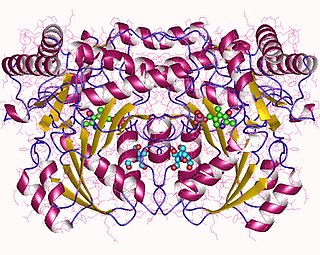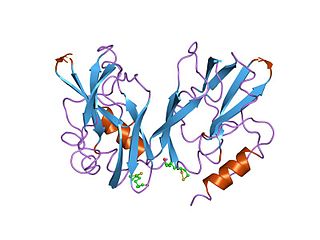| serine-glyoxylate transaminase | |||||||||
|---|---|---|---|---|---|---|---|---|---|
| Identifiers | |||||||||
| EC no. | 2.6.1.45 | ||||||||
| CAS no. | 37259-57-7 | ||||||||
| Databases | |||||||||
| IntEnz | IntEnz view | ||||||||
| BRENDA | BRENDA entry | ||||||||
| ExPASy | NiceZyme view | ||||||||
| KEGG | KEGG entry | ||||||||
| MetaCyc | metabolic pathway | ||||||||
| PRIAM | profile | ||||||||
| PDB structures | RCSB PDB PDBe PDBsum | ||||||||
| Gene Ontology | AmiGO / QuickGO | ||||||||
| |||||||||
In enzymology, a serine-glyoxylate transaminase (EC 2.6.1.45) is an enzyme that catalyzes the chemical reaction
- L-serine + glyoxylate 3-hydroxypyruvate + glycine
Thus, the two substrates of this enzyme are L-serine and glyoxylate, whereas its two products are 3-hydroxypyruvate and glycine.
This enzyme belongs to the family of transferases, specifically the transaminases, which transfer nitrogenous groups. The systematic name of this enzyme class is L-serine:glyoxylate aminotransferase. This enzyme participates in glycine, serine and threonine metabolism. It employs one cofactor, pyridoxal phosphate.








